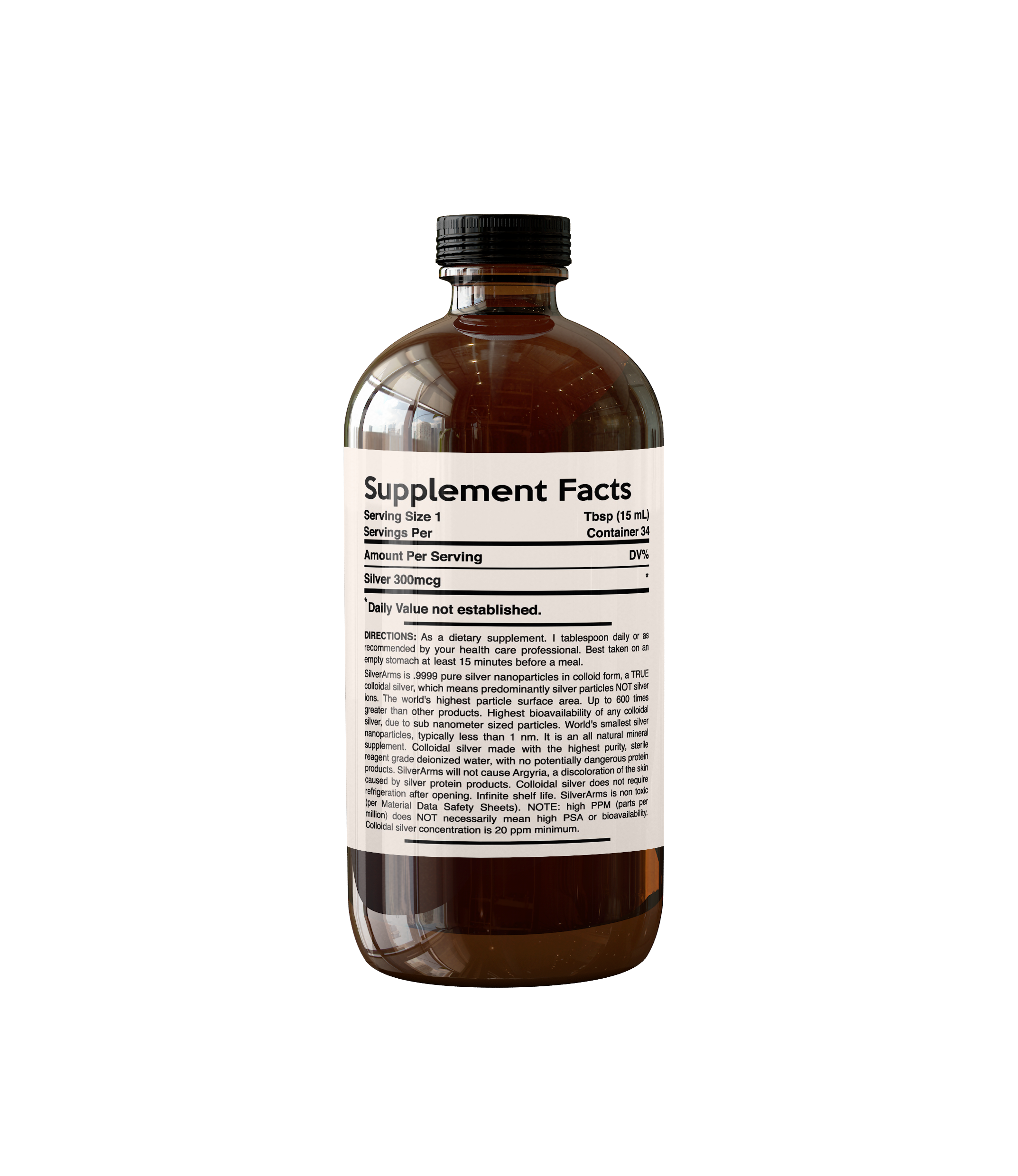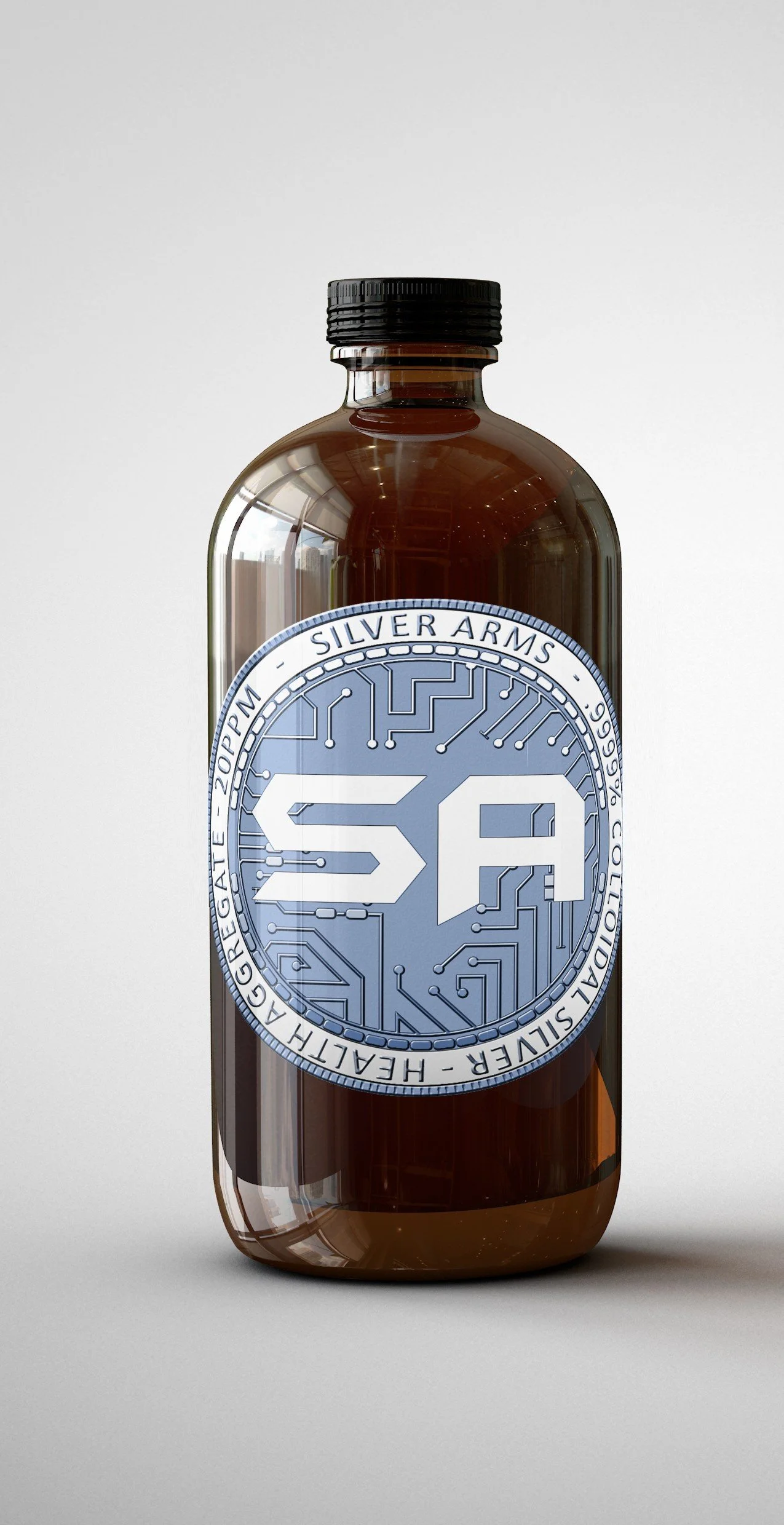Introduction
Natural colloidal silver was used as a strong and broad-spectrum antibiotic, since the late 1800s with no harmful side effects observed, for well over 100 years. There have been anecdotal references of ancient Greeks using silver plates, silver cups and silver utensils which conferred antimicrobial properties and prevented them from infectious illness. Besides, silver has a long history of medical usage and was mostly used empirically even before the understanding that microbes were the agents of infection (Alexander 2009). Silver preparations were used by Hippocrates the ‘Father of Medicine’, to treat ulcers and promote healing of wounds (Hippocrates (400 B.C.E.)).
In recent years, nanosilver has received a lot of attention in academic and scientific community due to its potential antimicrobial applications and hence is widely studied for its release and effects (Nowack et al. 2011). Presently, nanosilver-incorporated products have been used in a diverse range of applications such as food preservation and packaging, implants and other medical devices, clothing and textiles, water purification and disinfection, cosmetics and personal care products, etc. Although silver is successfully used for topical and surface applications in various fields, its usage is limited in cases of medical applications which require oral ingestion or inhalation. The primary concern associated with such applications is the risk of accumulation of silver in the body leading to heavy metal toxicity.
Silver can have numerous health benefits to the human body when used within a limit and be potentially harmful when used in excess. It is also desirable to supplement the diet with adequate amounts of antioxidants like selenium, vitamin E and amino acids like N-acetyl cysteine to safeguard from any potential harmful effects of heavy metals like silver. Hence, occasional short term usage of limited and minimal amounts of silver is preferred over the use of excessive amounts of silver over long periods of time, especially in case of oral administration or inhalation. In this context, the following review seeks to unravel the potential medical and health applications of silver which have still not been completely explored and used.
Antimicrobial activity
Silver ions and silver-based compounds possess strong biocidal effects on micro-organisms including bacteria, fungi, yeasts and viruses. Silver can exist in different forms such as elemental/metallic, ionic, nanosilver (1–100 nm) and colloidal (1–1000 nm) (Kulinowski 2008). The latter three forms are preferred over the metallic form due to their smaller size and higher surface area which facilitates higher antimicrobial efficiency.
Antibacterial activity of nanosilver
(Fig. 1) has been demonstrated against a wide range of Gram-positive and Gram-negative bacteria (Wijnhoven et al. 2009; Duncan 2011). The bactericidal activity of silver has been reported to reside in its ionic form, and micromolar doses (1–10 μmol l−1) of silver ions are sufficient to kill bacteria in water (Liu et al. 1994). The reported minimum inhibitory concentration and minimum bactericidal concentration of AgNPs in the size range of 7−20 nm against standard reference cultures are in the range of 0·78−6·25 and 12·5 μg ml−1 respectively (Jain et al. 2009). Nanosilver is also effective against strains of organisms that are resistant to potent chemical antimicrobials including multidrug-resistant bacteria like methicillin-resistant Staphylococus aureus (MRSA), methicillin-resistant Staphylococus epidermidis, vancomycin-resistant Enterococcus, extended spectrum β-lactamase producing Klebsiella, multidrug-resistant Pseudomonas aeruginosa, ampicillin-resistant Escherichia coli O157:H7 and erythromycin-resistant Streptococcus pyogenes (Yu 2007; Duncan 2011; Lara et al. 2011).
Silver has also been demonstrated to decimate most of the well-known bacterial pathogens that cause serious secondary infections during a viral infection such as Streptococcus pneumonia, Corynebacterium diphtheria, Neisseria gonorrhoeae, Klebsiella pneumonia, Haemophilus influenza, Bordetella pertussis, Mycobacterium and Pneumococci. These bacteria can cause complications including pneumonia, bronchitis, conjunctivitis, sinusitis, otits media and other chronic illness such as asthma (Gordon and Holtorf 2006).
Antifungal activity of silver nanoparticles (AgNPs) of various sizes has been demonstrated against Candida albicans and Candida glabrata which are common causes of oral thrush and dental stomatitis. Infections like these are particularly difficult to treat because the fungal micro-organisms involved form protective biofilms that prevent prescription antifungal drugs from functioning. These AgNP suspensions exhibited fungicidal activity against the tested strains at very low concentrations in the range of 0·4–3·3 μg ml−1. Hence, AgNPs appear to be a new potential strategy to combat these infections. As the nanoparticles are relatively stable in liquid medium, their use as mouthwash solution is proposed (Monteiro et al. 2012).
Electrically generated silver ions at <2 μg ml−1 concentration were shown to exhibit more efficient fungicidal properties than silver compounds such as silver sulfadiazine and silver nitrate. The growth of all fungal organisms was inhibited by silver concentration between 0·5 and 4·7 μg ml−1, and the fungicidal concentration of silver was as low as 1·9 μg ml−1 (Berger et al. 1976a). AgNPs exhibited considerable antifungal activity against C. albicans and Trichophyton mentagrophytes, the cause of fungal infections of the hair, skin and nails. The antimicrobial activity of silver was found to be comparable to Amphotericin B, one of the most powerful prescription antifungal drugs and superior to the well-known antifungal drug fluconazole (Kim et al. 2008a).
Silver nanoparticles could also be used as an effective treatment for fungal infections of the eyes. Fungal keratitis is emerging as a major cause of vision loss in developing nations largely due to the unavailability of effective antifungal agents. AgNPs were reported to exhibit potent in vitro antifungal activity against over 216 different strains of ocular fungal pathogens such as Fusarium sp., Aspergillus sp. and Alternaria alternate isolated from patients with fungal keratitis (Xu et al. 2013).
Antiviral activity of natural mineral silver in a variety of forms including colloidal silver has been demonstrated through nearly three decades of medical research (Fig. 2). It has been reported that silver can stop different types of viruses from replicating by merely binding to them. Recent research demonstrates that silver is so powerfully effective against viruses that it even stops the deadly HIV virus from infecting human cells. The vital requirement in order to exhibit such powerful antiviral activity is the size of the silver particles. Nanoparticles of size ranging from 1 to 100 nm are efficient as smaller size leads to more interaction and inhibition of viruses (Galdiero et al. 2011; Khandelwal et al. 2014). Silver nanoparticles undergo a size-dependent interaction with HIV-1 virus and nanoparticles in the size range of 1–10 nm were able to attach to the virus. The interaction is via preferential binding of AgNPs to the gp120 glycoprotein knobs which bear the exposed sulphur residues and inhibit the virus from binding to host cells in vitro (Elechiguerra et al. 2005).
Figure 2
Open in figure viewerPowerPoint
Antiviral mechanism of action of silver nanoparticles. [Colour figure can be viewed at wileyonlinelibrary.com]
Colloidal silver was found to show remarkable efficacy against the smallpox virus. Collargol and Protargol were the two medicinal preparations of colloidal silver used in the study. The reduction in concentration of viral particles was about 11 000 and 700 times for collargol and protargol respectively (Bogdanchikova et al. 1992). Herpes simplex virus types I and II was reported to be inactivated by silver nitrate at concentrations of 30 μmol l−1 or less (Shimizu et al. 1976). AgNPs of approximately 10 nm were demonstrated to inhibit monkeypox virus in vitro, supporting their potential use as an antiviral therapeutic agent (Rogers et al. 2008). AgNPs of approximately 10–50 nm in diameter were demonstrated to interact with viral DNA of hepatitis B virus and prevent replication in vitro. In this case the antiviral mechanism was attributed to the direct interaction between the nanoparticles and HBV double-stranded DNA or viral particles (Lu et al. 2008).
The collective authoritative medical literature reports silver to be virucidal against over 24 viruses. Additionally, it has been proposed that 200 plus viral strains known to cause upper respiratory tract infections, including most flu viruses, will also most likely succumb to the powerful antiviral qualities of very small particles of oligodynamic silver (Gordon and Holtorf 2006).
Mode of antimicrobial action of silver
The actual mechanism of toxicity of nanosilver is proposed to be the sum of various mechanisms and hence termed as multimodal action. Silver is known to react with nucleophilic amino acid residues in proteins, and attach to sulfydryl, amino, imidazole, phosphate and carboxyl groups. It causes bacterial cell wall damage and disruption of cytoplasmic membrane leading to leaching of metabolites, interferes with DNA synthesis, denatures proteins and enzymes (dehydrogenases), binds to ribosomes and inhibits protein synthesis, interferes with electron transport system and is involved in the production of reactive oxygen species (ROS) (Hatchett and White 1996; Feng et al. 2000). The primary mode of silver toxicity is its potential to release silver ions. Irrespective of the form of the silver used, a major characteristic that will affect the microbicidal effect of the silver is the concentration of silver ions released. The nano form with its large surface area to volume ratio has high potential for release of silver ions (Sotiriou and Pratsinis 2010). All forms of silver including silver compounds and silver salts have potential to release silver ions. Even the biocidal effect of elemental silver is due to formation of silver ions at low concentration on its surface.
Nanostructured silver targets the bacterial cell wall and cell membrane which is a protective barrier and serves several functions (Sondi and Salopek-Sondi 2004). Nanoparticles <10 nm in diameter can bind to bacterial cell wall and cause its perforation leading to rapid increase in cell permeability and ultimately cell death. In E. coli, nanosilver with average particle size of 12 nm is reported to result in formation of irregular shaped pits in the bacterial cell membrane. Silver ions can also cause the cell membrane to detach from the cell wall nevertheless, the mechanism of this process has still been unknown (Feng et al. 2000). Moreover, nanosilver binds with membrane proteins and sulphur-containing proteins through electrostatic interaction (Holt and Bard 2005; Wong and Liu 2010), and inhibits their function or damages their structure by generating free radicals (Choi and Hu 2008).
Silver can attack the respiratory chain in bacteria and lead to cell death (Sondi and Salopek-Sondi 2004). Respiration is the critical point in bacterial cell metabolism and is the mechanism of obtaining energy to perform all the energy-demanding life processes. Energy generation relies on the respiratory enzyme complexes associated with the respiratory chain, and silver ions disrupt the function of these enzymes by binding to the functional groups of amino acids and inhibiting the efficient electron transport via the respiratory chain. This ultimately results in the complete breakdown of electron transport and blockage of phosphorylation of ADP to ATP. NADH dehydrogenase complex is reported to be a potential target for silver ion activity (Holt and Bard 2005). Formation of proton-depleted regions around AgNPs was observed due to the micro-galvanic effect which could further lead to disruption of electrochemical gradient (Cao et al. 2011).
The creation of free radicals and induction of oxidative stress also contributes towards toxicity of AgNPs/ions (Kim et al. 2007; Cao and Liu 2010; Wong and Liu 2010). Production of ROS is dependent to some extent on the catalytic activity of nanoscale silver. ROS generation is initiated mainly as an outcome of the respiratory enzymes and respiratory chain dysfunction (Choi and Hu 2008). ROS are generated within or outside of the cell, as a consequence of cell damage/disruption (Liu et al. 2010). Studies using nitrifying bacteria have revealed that the increase in intracellular ROS levels was correlated with the rate of bacterial growth inhibition (Choi and Hu 2008). Sustained release of silver ions by AgNPs inside the bacterial cells in an environment with lower pH may create free radicals and induce oxidative stress, thus further enhancing the bactericidal activity (Morones et al. 2005; Song et al. 2006).
Genetic material being one of the important target sites, nanostructured silver was also reported to cause damage to the DNA (Feng et al. 2000; Kim et al. 2010). DNA loses its replication ability once the bacteria are treated with nanosilver. This is due to the capacity of silver ions to bind to the phosphorane residues of DNA molecules (Hatchett and White 1996; Morones et al. 2005). This interaction may prevent cell division and may ultimately lead to cell death. Furthermore, silver ions are also reported to affect gene expression. In E. coli, it has been shown that nanosilver denatures the 30S ribosomal subunit by preventing the expression of S2 protein, a component of the ribosomal subunit. Additionally, the expression of genes encoding other proteins and enzymes involved in energy reactions in ATP synthesis was also inhibited (Gogoi et al. 2006).
Release of silver ions is also reported to cause inactivation of proteins. Silver ions can interact with sulphur-containing proteins and thiol groups of vital enzymes in bacterial cell and result in their impaired function or inactivation (Hatchett and White 1996; Cao and Liu 2010). Silver exhibits catalytic activity by binding to the functional groups of amino acids and forming –S–S– bonds between the adjacent –SH groups in proteins. The formation of additional –S–S– bonds may induce molecular changes and lead to protein and enzyme inactivation (Wzorek and Konopka 2007). AgNPs are also reported to modulate the phosphotyrosine profile of putative bacterial peptides that could affect cellular signalling and therefore inhibit the growth (Shrivastava et al. 2007).
Antifungal activity of nanosilver against C. albicans was attributed to disruption of cell membrane structure and integrity resulting in inhibition of normal budding process (Kim et al. 2009). Trehalose is known to play a protective role in yeast by preventing the inactivation or denaturation of proteins and biological membranes, caused by a variety of stress conditions, including desiccation, dehydration, heat, cold, oxidation and toxic agents (Alvarez-Peral et al. 2002; Elbein et al. 2003). Nanosilver-treated cells were shown to accumulate more intracellular as well as extracellular glucose and trehalose as compared to the untreated cells. This increase in the sugar amount was attributed to several intracellular components released during membrane disruption by nanosilver (Lee et al. 2010b). It was also hypothesized that silver ion primarily affects the function of membrane-bound enzymes such as those in the respiratory chain resulting in loss of cellular integrity and osmosis (Mendes et al. 2014). Potential damage to the cell wall and transmembrane proteins and up-regulation of cell wall-strengthening genes in surviving cells was recently reported in the yeast Saccharomyces cerevisiae (Niazi et al. 2011). Additionally, when C. albicans and S. cerevisiae cells were exposed to AgNPs, significant changes to the membrane structure were observed. Pit formation was detected on the cell surfaces which finally resulted in the formation of pores and cell death (Nasrollahi et al. 2011). Silver ion is reported to form complexes with the bases contained in DNA and is also a potent inhibitor of fungal DNases (Saraniya Devi and Valentin Bhimba 2014).
Antibiofilm activity
In the natural world, more than 99% of all bacteria exist as biofilms (Costerton et al. 1987). Biofilms are the protective structures created by the colonies of pathogens in order to evade the effects of antibiotic drugs. They are protected by an extracellular matrix held together by proteins and polysaccharides commonly referred to as extracellular polymeric substance. This affects the efficiency of the strongest of antibiotics and biofilms can be as much as a thousand times more resistant than planktonic cells. The growth of biofilms is a major problem within the healthcare and food industries. Biofilms can form on many medical implants such as catheters, artificial hips and contact lenses. According to the National Institute of Health more than 60% of all infections are caused by biofilms. These include, but are not limited to endocarditis, cystic fibrosis, otitis media, chronic prostatitis, urinary tract infections, dental plaque infections, gingivitis, periodontitis, chronic sinusitis, burn wound infections and bone infections (Kim 2001).
Many recent studies have demonstrated conclusively that antimicrobial silver can penetrate through the bacterial biofilms to completely destroy them and can even prevent microbes from developing biofilms. As compared to the antibiotics, silver is proposed to be less affected by the micro-environmental variations found in biofilms due to its multimodal mechanism of action (Bjarnsholt et al. 2007). Antibiofilm activity of nanosilver has been summarized in Table 1.
MaterialMicro-organisms testedAntibiofilm concentrationReferences
AgNP-coated surfacesMethicillin-resistant Staphylococcus aureus (MRSA), methicillin-resistant Staphylococcus epidermidis (MRSE)50 μg ml−1Ansari et al. (2015)AgNPsMultidrug-resistant strains of Pseudomonas aeruginosa20 μg ml−1Palanisamy et al. (2014)Biologically synthesized AgNPsEscherichia coli0·5–64 μg ml−1Barapatre et al. (2016)Pseudomonas aeruginosaStaphylococcus aureusSilver ionsStaphylococcus epidermidis50 ppbChaw et al. (2005)AgNPsPseudomonas aeruginosa50–100 nmol l−1Kalishwaralal et al. (2010)Staphylococcus epidermidisNanometer scale silver coatingsProteus mirabilisNot determinedSahal et al. (2015)Candida glabrataCandida tropicalisAgNPsPseudomonas aeruginosa100 mg ml−1Martinez-Gutierrez et al. (2013)AgNPsStaphylococcus aureus15 μg ml−1Goswami et al. (2015)Escherichia coliBiogenic AgNPs coated catheterStaphylococcus aureus100 μg ml−1Namasivayam et al. (2013)






